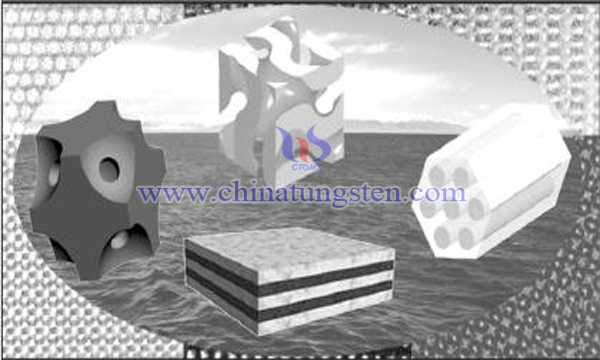Mesoporous Supported Phosphotungstic Acid Catalyst
- Details
- Category: Tungsten Information
- Published on Friday, 05 April 2019 20:00
With the rapid development of chemical industry, the variety and demand of ketals are increasing. Ketal is a kind of intermediate which can be used for carbonyl protection of organic compounds or pharmaceutical industry, even as a special reaction solvent. The synthesis of ketals is usually catalyzed by strong acid, which is synthesized by ketones and alcohols. The catalysts used are sulfuric acid, phosphoric acid, hydrogen chloride gas and p-toluene sulfonic acid. The advantage of the catalysts is that they are cheap and easy to obtain. However, the reaction easily produces wastewater which pollutes the environment and has strong corrosion effect on the equipment.

Mesoporous materials have high specific surface area, regular pore structure and narrow pore size distribution, which make them widely used in catalysis, separation, medicine and other fields. By combining phosphotungstic acid, mesoporous materials with silica and silica gel, they can not only retain the characteristics of ordered mesoporous materials with high specific surface area, large pore volume, large pore size and narrow pore size distribution, but also maximize excitation. Catalytic activity of phosphotungstic acid. Their recombination process is as follows:
1.Cetyltrimethylammonium bromide and tetraethyl orthosilicate were added into ammonia aqueous solution. Maser feed ratio, cetyltrimethylammonium bromide: tetraethyl orthosilicate: ammonia water (25%): deionized water = 1:0.37:2.8:142, stirred to dissolve at 80 ~℃, the solution was extracted and filtered and mesoporous silica filter cake was obtained.
2.Silica gel filter cake was obtained by fully reacting water glass with 15 wt% and 12 wt% sulfuric acid solution for 1.5 hours according to water glass: sulfuric acid weight ratio=5:1, adjusting pH to 3 with sulfuric acid with 98 wt% concentration, and washing the reaction material with distilled water and sodium ion content of 0.02 wt%.
3.The 10 grams of mesoporous silica cake and 10 grams of silica gel cake were put into the 100ml ball mill, and the ball was milled for 1 hours at a temperature of 60 degrees Celsius. 20 grams of solid powder was obtained. The solid powder was dissolved in 100 grams of deionized water at 25 degrees Celsius and spray dried at a rotational speed of 12000r/ min. The products obtained after spray drying were calcined at 500 degrees Celsius for 24 hours. After removing the template, 20 grams of spherical silica and silica gel composite carrier were obtained.
4.The above 20 grams spherical silica and silica gel composite carrier were put into the deionized water at 25 temperature and then mixed with phosphotungstic acid, stirring to dissolve, and spherical silica and silica gel composite carrier: Deionized water: the molar ratio of phosphotungstic acid was 1:25:1, and spray drying was carried out at 200 degrees Celsius, and the spherical silica and silica gel composite carrier loaded with phosphotungstic acid were obtained.
The supported phosphotungstic acid catalyst was characterized by XRD, scanning electron microscopy and X-ray fluorescence analyzer. The small angle spectrum peaks appeared in the XRD spectra show that the spherical silica and silica composite carriers supported by the spray drying method have the six pore structure of 2D, which is unique to mesoporous materials.
When the supported phosphotungstic acid catalyst is used to catalyze the reaction of cyclohexanone and glycerol, the catalyst can be recycled and reused, and has the advantages of reducing side reactions, improving conversion, non-corrosive equipment, simple post-treatment process and environmental protection.
- Tungsten Oxide Manufacturer & Supplier, Chinatungsten Online: www.tungsten-oxide.com
- Tungsten News & Prices of China Tungsten Industry Association: www.ctia.com.cn
- Molybdenum News & Price: news.molybdenum.com.cn
- Tel.: 86 592 5129696; Fax: 86 592 5129797; Email: sales@chinatungsten.com



 sales@chinatungsten.com
sales@chinatungsten.com